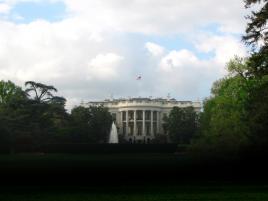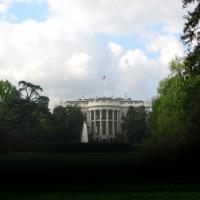Administration Touts Infrastructure Law’s Achievements over First 100 Days

It may seem like yesterday, but it has now been more than 100 days (and counting) since the Infrastructure Investment and Jobs Act (Pub. L. 117-58), otherwise known as the Bipartisan Infrastructure Law, was enacted. To mark the occasion, the Biden administration issued a 100-days fact sheet last week addressing some of the accomplishments made during the initial months of the law.
Among the key efforts made that the executive level, the White House launched Build.gov, which maintains the first edition of its Bipartisan Infrastructure Law guidebook, which is a central repository to help state, local, tribal and territorial governments find comprehensive information on the more than 375 programs included in the law. Future phases of the guidebook will provide updates, key timelines for program implementation, best practices, case studies, and links to key resources developed by the White House and partners. In tandem, the administration has provided a series of webinars providing more details about each of the guidebook’s 12 chapters to allow potential applicants and recipients to ask questions to agency experts overseeing implementation of key programs.
The fact sheet noted that about $100 billion has been announced to recipients from formula and competitive programs for roads and highways, bridges, ports, airports and water systems. Another nearly $50 billion in requests for information and notices of funding availability have been released. These include the following:
- The U.S. Department of Transportation (USDOT) and Federal Highway Administration announced $52.5 billion in federal highway apportionment for fiscal year (FY) 2022, the largest in decades for all 50 states and the District of Columbia. The law invests $350 billion in highway programs over the next five years.
- USDOT and the Department of Energy announced nearly $5 billion that will be made available over the next 5 years under the new National Electric Vehicle (EV) Infrastructure formula program and released guidance to states, available on Driveleectric.gov on how to strategically deploy EV charging infrastructure to create an interconnected national electric vehicle charging network.
- The U.S. Army Corps of Engineers announced $14 billion to strengthen supply chains, improve waterways and bolster climate resilience in FY 2022 for more than 500 projects across 52 states and territories using Bipartisan Infrastructure Law funds and other appropriations.
- The U.S. Department of Agriculture began accepting applications for the $1.15 billion ReConnect rural broadband program for loans and grants to state, local or territory governments, corporations, Native American tribes and limited liability companies and cooperative organizations to help people in rural areas get access to high-speed internet, which will be boosted by the infrastructure law.
Because of the massive amount of funding dedicated to the infrastructure law, the White House is emphasizing that agencies prioritize “investing public dollars efficiently and equitably, working to avoid waste and focusing on measurable outcomes for the American people.” Administration officials have met with federal agency Inspectors General (IG) and Government Accountability Office (GAO) leaders. “Going forward, the administration will work with agency IGs and GAO to share data and effective practices so that program planning, design, execution and financial management, as well as data, tracking and reporting, support transparency and help ensure taxpayer dollars are spent well,” the fact sheet explains.
We will continue to report on programs developed under this law and will note any particular successes or concerns. Stay tuned!
Join us for our following Thompson Grants event:
Nonprofit Legal, Finance, and Grants Conference | March 16-18, 2022 | Washington, D.C.



